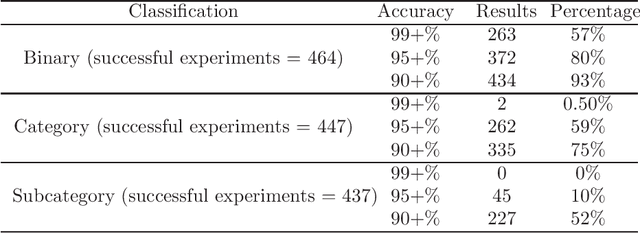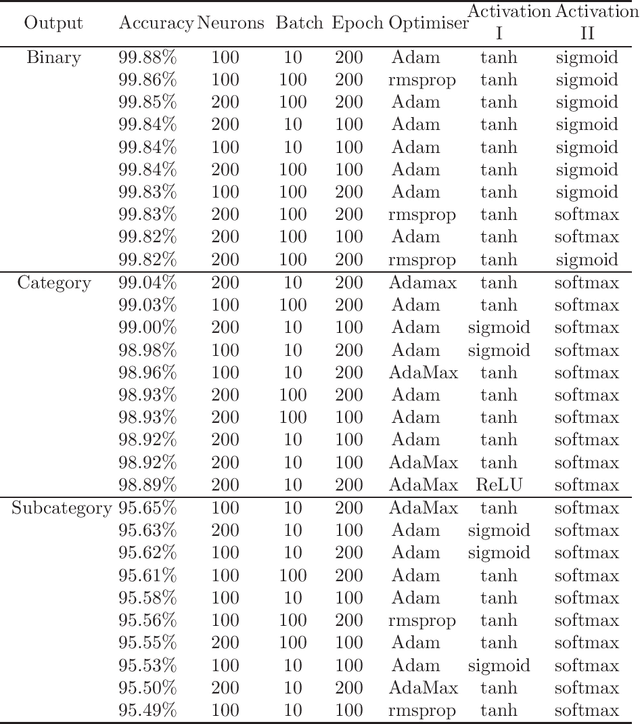Zongwen Fan
A fuzzy adaptive evolutionary-based feature selection and machine learning framework for single and multi-objective body fat prediction
Mar 20, 2023Abstract:Predicting body fat can provide medical practitioners and users with essential information for preventing and diagnosing heart diseases. Hybrid machine learning models offer better performance than simple regression analysis methods by selecting relevant body measurements and capturing complex nonlinear relationships among selected features in modelling body fat prediction problems. There are, however, some disadvantages to them. Current machine learning. Modelling body fat prediction as a combinatorial single- and multi-objective optimisation problem often gets stuck in local optima. When multiple feature subsets produce similar or close predictions, avoiding local optima becomes more complex. Evolutionary feature selection has been used to solve several machine-learning-based optimisation problems. A fuzzy set theory determines appropriate levels of exploration and exploitation while managing parameterisation and computational costs. A weighted-sum body fat prediction approach was explored using evolutionary feature selection, fuzzy set theory, and machine learning algorithms, integrating contradictory metrics into a single composite goal optimised by fuzzy adaptive evolutionary feature selection. Hybrid fuzzy adaptive global learning local search universal diversity-based feature selection is applied to this single-objective feature selection-machine learning framework (FAGLSUD-based FS-ML). While using fewer features, this model achieved a more accurate and stable estimate of body fat percentage than other hybrid and state-of-the-art machine learning models. A multi-objective FAGLSUD-based FS-MLP is also proposed to analyse accuracy, stability, and dimensionality conflicts simultaneously. To make informed decisions about fat deposits in the most vital body parts and blood lipid levels, medical practitioners and users can use a well-distributed Pareto set of trade-off solutions.
Uncertainty-Aware Performance Prediction for Highly Configurable Software Systems via Bayesian Neural Networks
Dec 27, 2022



Abstract:Configurable software systems are employed in many important application domains. Understanding the performance of the systems under all configurations is critical to prevent potential performance issues caused by misconfiguration. However, as the number of configurations can be prohibitively large, it is not possible to measure the system performance under all configurations. Thus, a common approach is to build a prediction model from a limited measurement data to predict the performance of all configurations as scalar values. However, it has been pointed out that there are different sources of uncertainty coming from the data collection or the modeling process, which can make the scalar predictions not certainly accurate. To address this problem, we propose a Bayesian deep learning based method, namely BDLPerf, that can incorporate uncertainty into the prediction model. BDLPerf can provide both scalar predictions for configurations' performance and the corresponding confidence intervals of these scalar predictions. We also develop a novel uncertainty calibration technique to ensure the reliability of the confidence intervals generated by a Bayesian prediction model. Finally, we suggest an efficient hyperparameter tuning technique so as to train the prediction model within a reasonable amount of time whilst achieving high accuracy. Our experimental results on 10 real-world systems show that BDLPerf achieves higher accuracy than existing approaches, in both scalar performance prediction and confidence interval estimation.
Explainable and Optimally Configured Artificial Neural Networks for Attack Detection in Smart Homes
May 17, 2022



Abstract:In recent years cybersecurity has become a major concern in adaptation of smart applications. Specially, in smart homes where a large number of IoT devices are used having a secure and trusted mechanisms can provide peace of mind for users. Accurate detection of cyber attacks is crucial, however precise identification of the type of attacks plays a huge role if devising the countermeasure for protecting the system. Artificial Neural Networks (ANN) have provided promising results for detecting any security attacks for smart applications. However, due to complex nature of the model used for this technique it is not easy for normal users to trust ANN based security solutions. Also, selection of right hyperparameters for ANN architecture plays a crucial role in the accurate detection of security attacks, especially when it come to identifying the subcategories of attacks. In this paper, we propose a model that considers both the issues of explainability of ANN model and the hyperparameter selection for this approach to be easily trusted and adapted by users of smart home applications. Also, our approach considers a subset of the dataset for optimal selection of hyperparamters to reduce the overhead of the process of ANN architecture design. Distinctively this paper focuses on configuration, performance and evaluation of ANN architecture for identification of five categorical attacks and nine subcategorical attacks. Using a very recent IoT dataset our approach showed high performance for intrusion detection with 99.9%, 99.7%, and 97.7% accuracy for Binary, Category, and Subcategory level classification of attacks.
 Add to Chrome
Add to Chrome Add to Firefox
Add to Firefox Add to Edge
Add to Edge